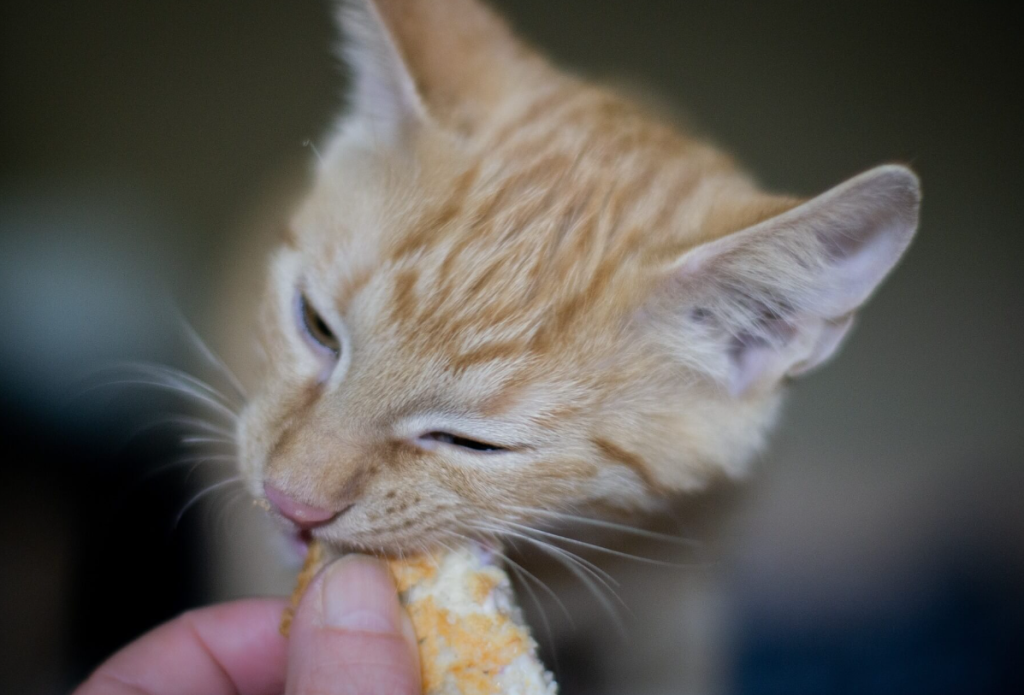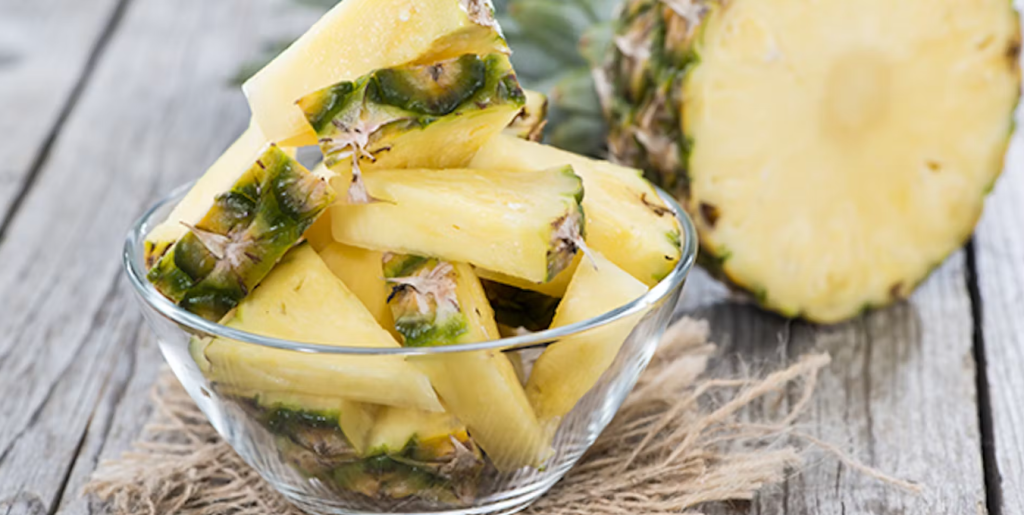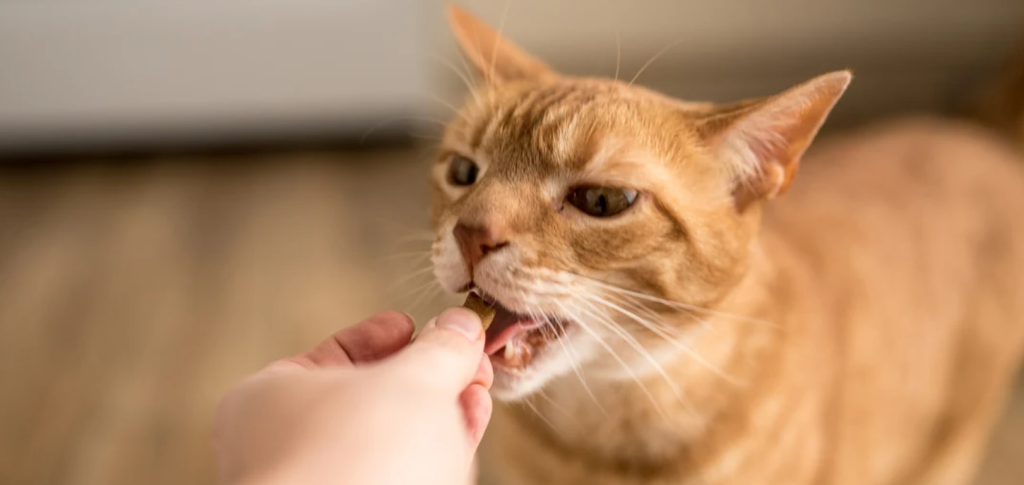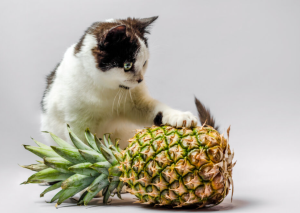As a fellow cat owner, I know how tempting it can be to want to share delicious fruits like pineapple with our furry friends. However, human food isn’t always safe for cats. So, can cats eat pineapple?
The short answer is yes, cats can eat pineapple in moderation. Pineapple is non-toxic to cats, but that doesn’t mean they should eat it freely. Pineapple contains sugars and acids that can cause digestive upset if cats eat too much.
As a cat owner named Lucas with a mischievous cat named Shadow, I’ve learned a lot about safely sharing fruits and vegetables with cats through trial and error. In this article, I’ll share my own experience with giving pineapple to cats as well as research-backed guidance to help you determine if pineapple is a good occasional treat for your kitty.
My Experience With Shadow and Pineapple
As a curious kitten, Shadow would try to steal pineapple off my plate whenever I had some. I’d read conflicting advice online about cats and pineapple. Some sources said it was toxic while others said small amounts were fine. I decided to move forward slowly and cautiously to see how he handled it.
The first time Shadow tried fresh pineapple, I only let him lick a drop of juice off my finger. He didn’t have any reaction, so a few days later I let him lick a cube of flesh. When that went well, I slowly moved up to letting him eat a few small pieces.
While pineapple didn’t seem to cause vomiting, diarrhea, or other worrying symptoms, Shadow did suffer from stomach upset if he ate too much. signs like mild vomiting and soft stool told me his sensitive digestive system was overwhelmed by the sugars and acids.
Through this gradual introduction process, I learned that cats can eat a few small bites of pineapple flesh in moderation. The key is being careful not to overdo it! Too much can upset their digestion.
Now as a treat every few weeks or so, I’ll share a few tiny cubed pieces of fresh pineapple with Shadow. He loves the sweet tropical flavor! But I’m careful to limit the portion to just a taste.
Benefits and Risks of Feeding Pineapple to Cats

Now that you’ve heard about my experience with Shadow and pineapple, let’s take a deeper look at the research on how pineapple affects feline health:
Potential Benefits
- Vitamins – Fresh pineapple contains vitamins like vitamin C and folate. However, cats get these from their regular food and don’t benefit from extra supplementation.
- Fiber – Pineapple contains both soluble and insoluble fiber. Fiber helps support healthy digestion and may aid gastrointestinal health.
- Bromelain – This group of digestive enzymes may offer anti-inflammatory effects. But evidence for benefits in cats is lacking.
- Taste enrichment – As an occasional treat, small tastes of pineapple can provide sensory enrichment for cats. Different flavors and textures keep cats mentally stimulated.
Potential Risks
- Digestive upset – The sugars, acids, fiber, and bromelain in pineapple may irritate the digestive tract, especially if large amounts are eaten. Diarrhea or vomiting could result.
- Allergies – Some cats may be allergic or intolerant to compounds found in pineapple. Discontinue feeding pineapple if any adverse effects are seen.
- Weight gain – Pineapple is high in natural sugar. Feeding too much can contribute to excess calories leading to unhealthy weight gain in cats.
- Pesticides – The rind and skin of pineapple may contain traces of pesticides, making them unsafe for cats. Only the flesh is considered safe.
- Choking hazards – Any pieces of pineapple given to cats should be small enough to swallow safely without choking. The fibrous texture also poses a hazard.
Feeding Guidelines: How Much Pineapple Can Cats Eat?
Pineapple is safe for cats to consume in moderation and as an occasional treat only. Here are some feeding guidelines to follow:
- Start with just a small lick of juice to test for any negative reaction.
- Build up slowly to 1-2 pieces the size of your fingernail once or twice a week at most. Any more may cause digestive upset.
- Avoid feeding pineapple daily or in large amounts. Too much can have adverse effects. Pineapple should not be a regular part of a cat’s diet.
- Only feed fresh, ripe pineapple flesh. Never give canned, dried, or juice made for humans – it’s too sugary and acidic. Avoid pineapple flavored cat treats.
- Watch your cat’s reaction. Discontinue feeding pineapple if you notice diarrhea, vomiting, rashes, itching, or other concerning symptoms.
- Never let your cat chew or eat the rind, skin, core, leaves, or spikes. Only the flesh is safe and digestible.
- No pineapple for kittens! Kittens under 12 months old should not have pineapple due to immature digestive systems.
Following these pineapple serving guidelines will help ensure you offer this fruit safely and responsibly as an occasional treat.
How to Prepare Pineapple for Cats

Preparing fresh pineapple properly is key to safety:
- Always wash thoroughly before preparation
- Use a sharp, clean knife and cutting board
- Peel off all skin and spikes. Both can scratch the mouth and throat. Discard leaves.
- Slice off both ends and discard. Also remove the fibrous, hard core.
- Cut the flesh into small cubes no bigger than your fingernail.
- Avoid canned versions packed in sugary juice. The high acid content can also erode cat’s teeth.
- Never give dried pineapple or juice made for humans. Both are too high in sugar for cats.
- Refrigerate any leftovers promptly and use within 2 days. Discard if it develops mold. Pineapple spoils quickly.
Proper preparation removes all hazardous parts of the pineapple and leaves just the safe, bite-sized pieces of flesh for your cat to enjoy!
Signs of a Pineapple Allergy in Cats
Though uncommon, some cats may be allergic or intolerant to compounds found in pineapple. Here are some signs of an adverse reaction:
- Itchy skin, rashes, or hives
- Face or paw swelling
- Excessive licking, biting, or scratching
- Skin redness
- Gastrointestinal signs like vomiting, diarrhea, or loss of appetite
- Respiratory signs like coughing, sneezing, wheezing
- Behavioral changes like lethargy or agitation
If you notice any concerning reaction after feeding pineapple, discontinue serving it and see your vet if severe or persistent symptoms occur. Provide supportive care at home.
Some cats appear to have stronger reactions than others based on individual tolerance. Pay close attention the first few times you offer pineapple and stop immediately if you have any concerns.
Healthy Treat Alternatives to Pineapple for Cats

While pineapple is safe for most cats in moderation, you may be looking for lower sugar and acid alternatives as treats. Here are some healthier options:
- Meat: Natural cooked chicken, beef, turkey, or fish. Freeze into cubes or flakes.
- Cheese: Low-fat, low-sodium varieties like cheddar or mozzarella. Use just tiny pieces.
- Vegetables: Potatoes, carrots, green beans, or squash – all cooked plain.
- Fruits: Small amounts of banana, apple, blueberries, or seedless watermelon.
- Commercial treats: Look for all-natural products with no sugary fruit fillers.
- Cat grass: Wheatgrass or oat grass grown just for cats. Provides fiber and aids digestion.
Rotate different treats to keep your cat interested and avoid overindulging on any one. For optimal health, treats should only make up 10% or less of your cat’s daily calories.
3 Key Pineapple Safety Tips for Cat Owners
- Only feed fresh pineapple flesh – never canned or dried versions made for humans. The high sugar content is unsafe.
- Start with just a lick of juice, then build up slowly to tiny pieces. Too much can cause digestive upset.
- Immediately stop feeding pineapple if you notice any signs of an allergic reaction or intolerance. Seek vet help if severe.
Conclusion: An Occasional Tropical Treat
While pineapple isn’t toxic to cats, its high sugar and acid content mean it should only be fed in moderation. By slowly introducing pineapple to my cat Shadow and paying close attention to his reaction, I learned that cats can enjoy small tastes.
However, pineapple should never make up more than 10% of a cat’s diet or calories. Excessive amounts can lead to digestive issues. By following proper preparation and serving size guidelines, though, fresh pineapple flesh can be a fun occasional treat for cats to enjoy!
I hope this article helped explain both the benefits and risks of feeding pineapple to cats. Remember to keep an eye on your cat’s individual response. And as always, check with your vet for tailored advice about your feline friend and their nutritional needs.
Frequently Asked Questions
Is it bad to give cats pineapple juice?
Pineapple juice is too high in sugars and acids for cats. Avoid giving any type of pineapple juice made for humans. Even juice from canned pineapple is unsuitable and may erode tooth enamel. Only feed small bites of fresh, ripe pineapple flesh.
Can pineapple help with cat hairballs?
There is no evidence that pineapple acts as a hairball remedy for cats. The bromelain enzymes may aid minor digestion, but won’t prevent hairballs. However, the small amounts cats can safely eat likely provide negligible benefits. Fiber from other sources is more effective.
Is pineapple toxic to cats?
No, pineapple is not toxic to cats. However, they cannot safely process large amounts due to the high sugar and acid content. Feeding too much pineapple can result in vomiting, diarrhea, and other digestive issues. But small tastes of the flesh are generally safe in moderation. Always monitor your cat’s reaction.



